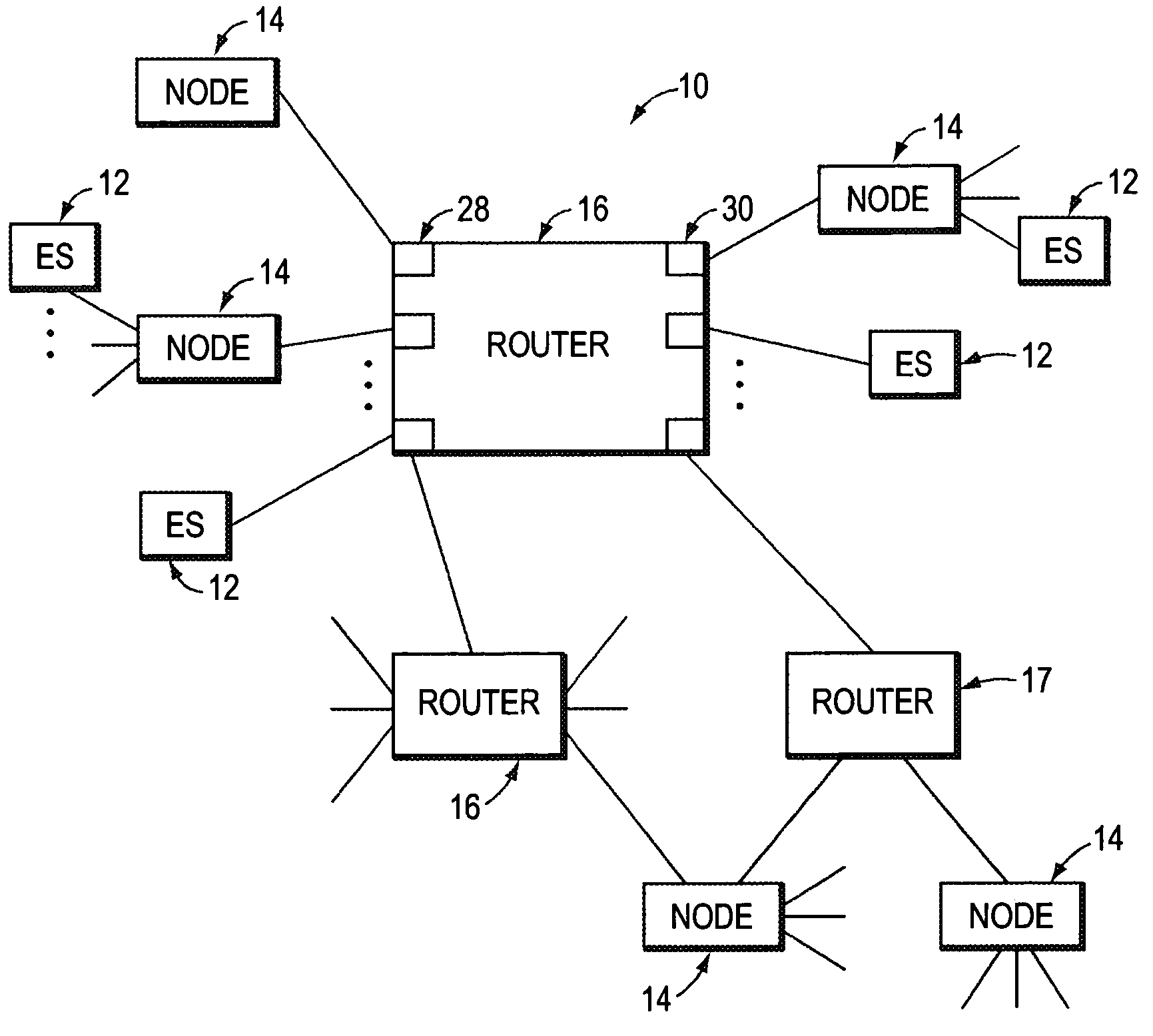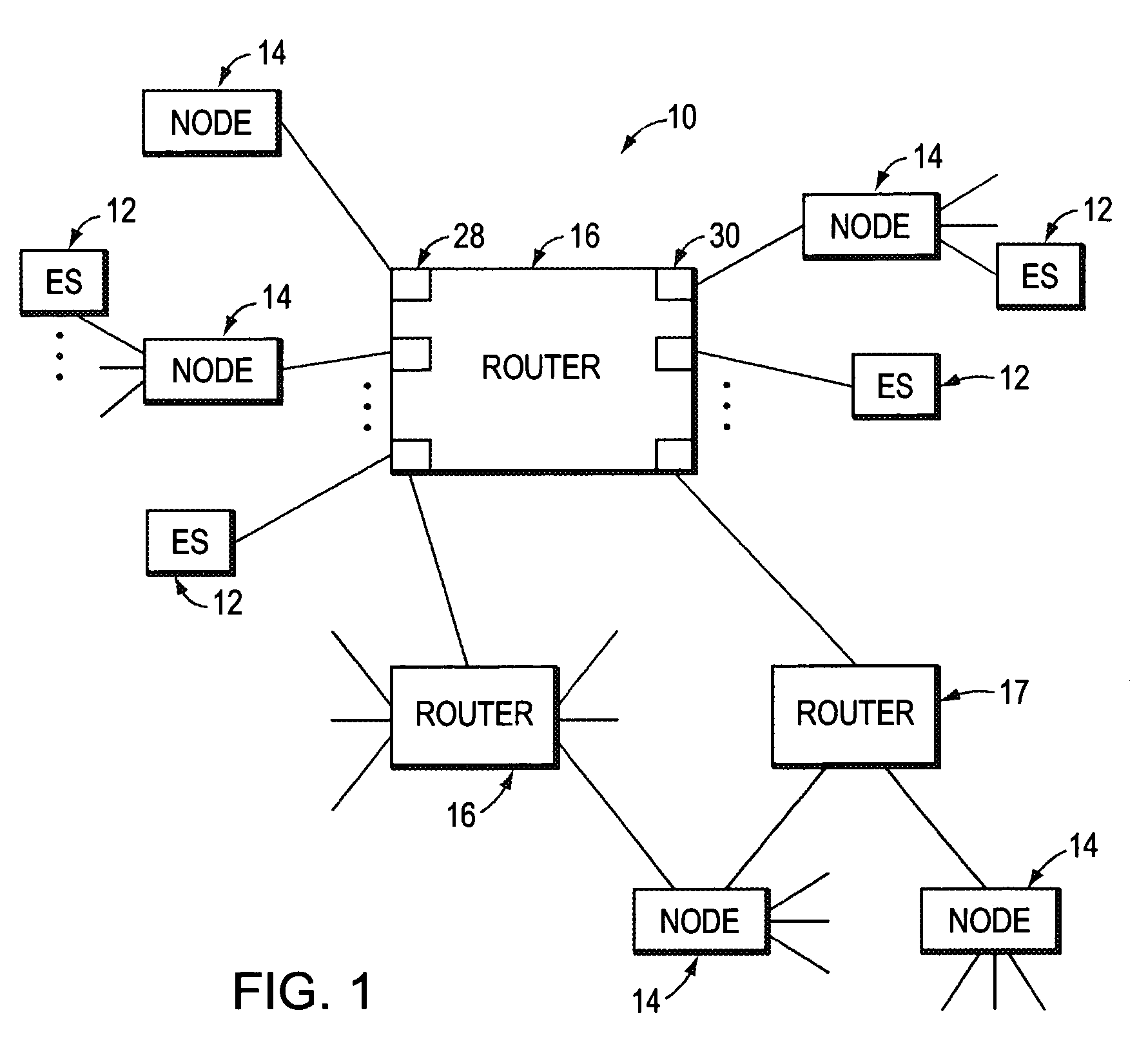Router with class of service mapping
a technology of service mapping and router, applied in the field of routers and switches, can solve the problems of increasing the probability of loss, increasing the delay, prohibitively expensive upgrade,
- Summary
- Abstract
- Description
- Claims
- Application Information
AI Technical Summary
Benefits of technology
Problems solved by technology
Method used
Image
Examples
Embodiment Construction
[0017]Referring now to FIG. 1, a network 10 includes a plurality of endstations 12 and nodes 14 that transmit packets to other endstations 12 and nodes 14 through routers 16 and 17. The endstations 12 and nodes 14 assign packets to classes of service based on information contained in the packets and / or on predetermined traffic management rules that are provided by the network manager and / or various service providers. The classes of service are essentially associated with maximum limits for transmission delays and probabilities of packet loss. Higher classes are associated with shorter maximum delays and lower probabilities of packet loss. Packets that must be delivered as essential parts of a transmission are, for example, assigned to a higher class then are packets that contain non-essential information.
[0018]Preferably, the endstation 12 or the node 14 that introduces the packet to the network assigns the packet to one of 2n+m classes of service. To inform the routers 16 and 17 of...
PUM
 Login to View More
Login to View More Abstract
Description
Claims
Application Information
 Login to View More
Login to View More - R&D
- Intellectual Property
- Life Sciences
- Materials
- Tech Scout
- Unparalleled Data Quality
- Higher Quality Content
- 60% Fewer Hallucinations
Browse by: Latest US Patents, China's latest patents, Technical Efficacy Thesaurus, Application Domain, Technology Topic, Popular Technical Reports.
© 2025 PatSnap. All rights reserved.Legal|Privacy policy|Modern Slavery Act Transparency Statement|Sitemap|About US| Contact US: help@patsnap.com



